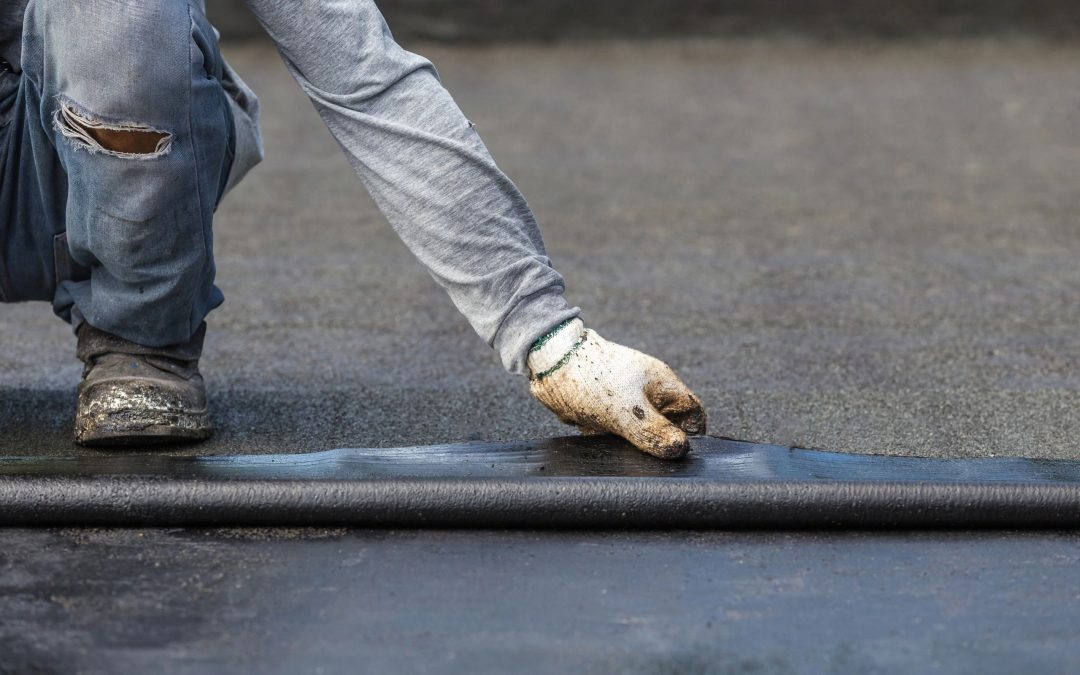In just about any dictionary, the classic definition of an asset is said to be an economic resource that can be owned and is expected to provide future economic benefits. A company lists its assets on its balance sheet and the common asset categories include cash; accounts receivable; inventory; prepaid expenses; and property and equipment.
While the roof of a commercial building might not be an actual line item on the balance sheet, professional building managers and owners would agree that it is an important and expensive part of the property to protect.
Based on our managing this asset for thousands of commercial buildings, we have noticed several factors that can help an owner/manager manage your commercial roof asset.
#1 Get an Accurate Assessment of its Current Status
Managing a commercial roof asset involves understanding the roof’s life expectancy and the current conditions. This requires a professional assessment of its status. At DK Haney Roofing, we use a roof grading system. We give it a grade of A, B, C, D or F.
- A signifies that there are 10 or more years left on that roof, provided regular maintenance occurs.
- B suggests that there are about 8 to 10 years before it needs to be replaced.
- C grade means we feel there are at least five years before replacement is needed.
- D suggests that it will need to be replaced in about 2 to 4 years.
- F is a roof that should be replaced within a year.
At DK Haney Roofing, we are trained to inspect a roof and then try to extend the life of this asset. For example, if your roof is graded as a “D” but the membrane still has life, we want to do repairs and bring it up to a “C” grade. Basically, if the owner follows our recommendations, we are going to be able to squeeze out every last year of use out of that roof. With preventative maintenance, even an older roof can be improved, and more years of use can be realized.
#2 Closely Monitor Warranty Requirements
How does DK Haney manage the warranty work?
DK Haney’s Service Manager, Shane Jones says “We check all warranty criteria as a new client. This ensures that they are in compliance with their warranty. Many owners fail to realize that some maintenance failure can actually void their roof’s warranty. There are exclusions in all of these warranty policies and if an owner or manager fails to use proper due diligence, there could be issues, which could have been corrected, that cause a warranty to be voided. This can become a very expensive mistake.”
For example, with most warranties, if there is standing water on a roof for more than 72 hours, that can void the warranty on that roof. This means the owner will be charged for the roof replacement and all damages associated with this.
We are dedicated to making our customers aware of everything that is going on with their roof. We do this with regular, thorough inspections and service visits. Inspections often occur in the fall, when there are dramatic temperature changes that cause expansion and contraction with the roof material. This is often when major issues become evident.
It’s surprising how few building owners and managers have the actual copies of their roof’s warranty available. When we take on a new client, we locate all of those documents (even if it means going to the manufacturer) and input them into our secure, cloud-based portal so that when there is an issue, the owner can have immediate access to all warranty information.
Our objective is to build trust with the building owner or manager so that they don’t have to worry about roof maintenance. We strongly believe that keeping track of ALL roofing issues is our job. With our video and photo documentation, we give the building managers a real budget matrix that they can work with. We know when urgent issues need to be corrected and this helps the owner/manager manage the entire lifecycle of this asset.
#3 Use Professional Roofing Contractors for Post-Storm Inspections
“In many parts of the country, especially Texas and the Midwest, there will be a weather event such as a hailstorm and the building owner will fail to check the roof for damage,” Jones said. “We inspect all of our client roofs after any weather event to determine if the damage requires repairs. We are trained to get the appropriate documentation to present to the building’s insurance carrier.
“We act as a kind of ‘check and balance’ to ensure that the insurance companies are taking care of the roof in the appropriate way. We are experts in roofing and this is data that can be used by the experts in insurance claims assessment.
“There are some roofing contractors that say they are ‘storm claim specialists.’ We are not licensed to be storm claims specialists, any more than they are. We ARE licensed to be roofing contractors and our expertise is in inspecting, maintaining, and repairing roofs. This is different from being an insurance claims adjuster. The insurance experts appreciate this approach because they know we are not overstepping our responsibilities. We identify damage and offer insights into the costs for repair or replacement.
“Having this ‘third party’ assessment gives the policy owner more leverage with their insurance carrier.”
We have seen that there are several factors that can help an owner/manager protect their commercial roof asset. By following the tips in this article, you can ensure that your building stays protected and its value is maintained. Contact us today for a no-obligation roof inspection.

